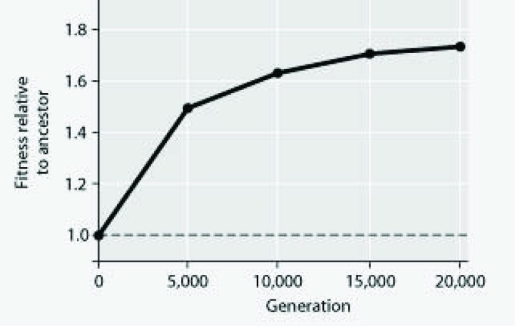Multiple Choice
The following question refers to the figure.
In this eight-year experiment, a population of E. coli, begun from a single cell, was grown in low-glucose conditions for 20,000 generations. Each culture was introduced to fresh growth medium every 24 hours. Occasionally, samples were removed from the population, and its ability to grow in low-glucose conditions was tested against that of members sampled from the ancestral (common ancestor) E. coli population. 
If the experimental population of E. coli lacks an F factor or F plasmid, and if bacteriophages are excluded from the bacterial cultures, how would beneficial mutations be transmitted horizontally to other E. coli cells?
A) sex pili
B) transduction
C) conjugation
D) transformation
Correct Answer:

Verified
Correct Answer:
Verified
Q27: Use of synthetic fertilizers often leads to
Q28: Which of the following extremophiles is the
Q29: Use the following information and graph to
Q30: Which of the following involves metabolic cooperation
Q31: Assuming that each of these prokaryotes possesses
Q33: A bacterium has the following characteristics:<br>∙ It
Q34: Bacteria perform a number of ecological roles.
Q35: A bacterium has the following characteristics:<br>∙ It
Q36: The following table depicts characteristics of five
Q37: The following table depicts characteristics of five